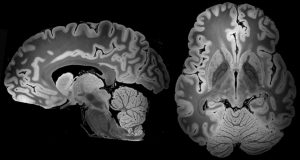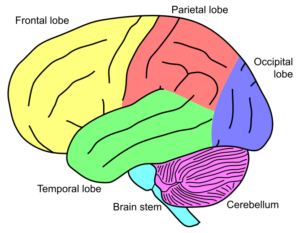
Snapshot: What is Articulation?
Articulation refers to the ability to produce speech sounds using the tongue, lips, jaw, and the roof of your mouth. All of these organs are also known as articulators. The Read More…
Support the Ataxia Research Drive before 12/31/2025 to fuel progress toward treatment development. DONATE NOW
A collection of resources for individuals and families affected by Acute Cerebellar Ataxia
Acute Cerebellar Ataxia (ACA) causes difficulties with balance and coordination. This condition is called ataxia. Ataxia caused by Acute Cerebellar Ataxia is an acquired form of ataxia, meaning that the ataxia symptoms are the result of an injury or illness.
For complete information about symptoms, diagnosis, and treatment of Ataxia, visit our What is Ataxia? page. This page contains NAF’s resources that are specific to Acute Cerebellar Ataxia.
Sign up for our mailing list to stay up-to-date on Ataxia news.
Presented by Kristin Barañano, MD, PhD
This webinar gave an overview of the causes and symptoms of the disease, the typical diagnostic journey for those affected, what to expect for clinical care, and an overview of current research into the disease covers the causes and symptoms of Ataxia Type Here, the typical diagnostic journey for those affected, and what to expect for clinical care.
NAF offers webinars on many topics to help you live better with Ataxia. Visit www.ataxia.org/webinars to find other helpful presentations.
Participating in a research study or clinical trial is one way to take an active role in furthering understanding and treatment of Ataxia. It is also a way to get access to new treatment options before they are widely available. To find studies that are enrolling patients, visit our Help Develop New Treatments page.
Acute Cerebellar Ataxia is an acquired form of Ataxia, where cerebellar dysfunction is due to a recent, or actively occurring, infectious illness or vaccination. Some people call it post-infection Ataxia. Acute Cerebellar Ataxia accounts for 50-60% of all sudden-onset ataxia in children. Acute Cerebellar Ataxia is most common in children under 6 years old. However, teenagers and adults can also develop Acute Cerebellar Ataxia. Many viral infections can lead to Acute Cerebellar Ataxia, such as Chicken Pox, COVID-19, and Measles.
It is estimated that between 1 in 100,000 and 1 in 500,000 children will develop Acute Cerebellar Ataxia each year. These numbers used to be higher historically, but the development of vaccinations has decreased the yearly number of Acute Cerebellar Ataxia.
Acute Cerebellar Ataxia has a sudden onset. This means that symptoms develop quickly, in a matter of hours or days. Common symptoms include impaired balance, coordination, and dexterity. People with Acute Cerebellar Ataxia may also have slurred speech, jerking eye movements, and dizziness. People with Acute Cerebellar Ataxia usually experience a fever or infection before symptoms begin.
Over 90% of children with Acute Cerebellar Ataxia will completely recover from Ataxia, usually without any treatment. However, for unknown reasons, some people with Acute Cerebellar Ataxia develop persistent symptoms. Treatment for Acute Cerebellar Ataxia largely focuses on treating the underlying infection. However, in some cases, immunomodulatory therapy such as steroids or Immune Globulin (IVIg) may be prescribed by a physician. There remains some controversy around the best course of action for the immediate Acute Cerebellar Ataxia.
For individuals with persistent Acute Cerebellar Ataxia symptoms, rehabilitation strategies can help manage Ataxia symptoms. This includes exercise, physical therapy, occupational therapy, and speech therapy. Medications may also be prescribed to help manage symptoms such as nausea, vertigo, or headache.
A neurologist is often the most helpful specialist in recognizing symptoms and diagnosing the disease that causes Ataxia. A neurologic examination can determine whether a person has ataxia symptoms. MRI brain imaging and lumbar punctures are common tests used to diagnose Acute Cerebellar Ataxia. Blood or urine tests may also be ordered to rule out other potential diagnoses, such as sudden-onset ataxia caused by a child accidentally ingesting medication. Sharing personal medical history, including recent illnesses or infections, is an important part of the diagnosis process.
SCAsource provides Ataxia research news, directly from researchers to the Ataxia community. Visit SCAsource to see their full collection. Here is a collection of articles about Acute Cerebellar Ataxia Here.

Articulation refers to the ability to produce speech sounds using the tongue, lips, jaw, and the roof of your mouth. All of these organs are also known as articulators. The Read More…

Speech intelligibility refers to how many words can be correctly understood by a listener. For example, if someone says the phrase, “My name is John,” and a listener hears, “My Read More…

Nystagmus, also known as ocular ataxia, is a term that refers to uncontrollable eye movement- usually a repetitive cycle of slow movement in a specific direction followed by a quick Read More…

Public transit may not be the first thing that comes to mind when we think about the brain, but it’s a great way to understand how all the parts of Read More…

What is it? Magnetic resonance imaging (MRI) is a type of technology used to take detailed pictures of the body. It is commonly used to detect abnormalities in the body, Read More…

The cerebellum, often referred to as the “little brain”, is part of the brain that is located behind the cerebrum (forebrain). The cerebellum accounts for about 10% of the brain’s Read More…
